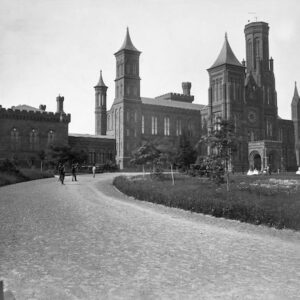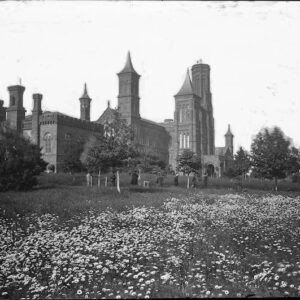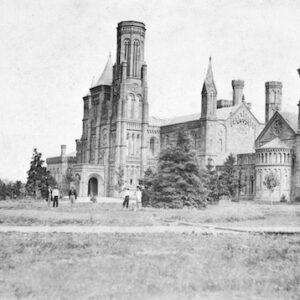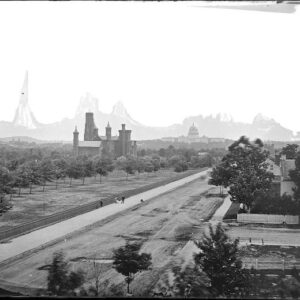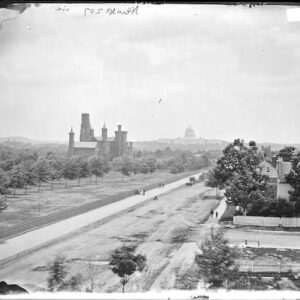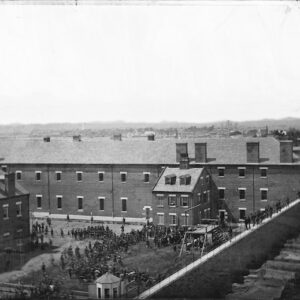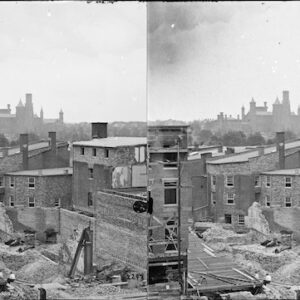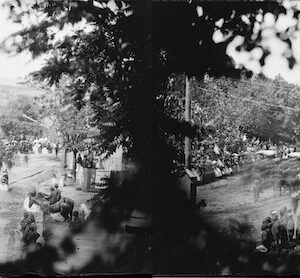Tag: Smithsonian Institution (Washington DC)
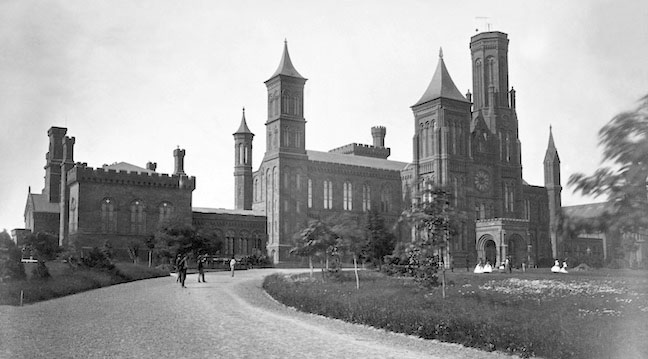 Wikipedia says: The Smithsonian Institution, Building, located near the National Mall in Washington, D.C… is constructed of Seneca red sandstone in the Norman Revival style (a 12th-century combination of late Romanesque and early Gothic motifs; built in the Gothic and Romanesque revival styles) and is nicknamed The Castle. It was completed in 1855 and designated a National Historic Landmark in 1965.
Wikipedia says: The Smithsonian Institution, Building, located near the National Mall in Washington, D.C… is constructed of Seneca red sandstone in the Norman Revival style (a 12th-century combination of late Romanesque and early Gothic motifs; built in the Gothic and Romanesque revival styles) and is nicknamed The Castle. It was completed in 1855 and designated a National Historic Landmark in 1965.
The Castle was the first Smithsonian building, designed by architect James Renwick, Jr., whose other works include St. Patrick’s Cathedral in New York City and the Smithsonian’s Renwick Gallery, also in Washington D.C. The building committee held a nationwide design competition in 1846 and selected Renwick’s design by a unanimous vote. A cardboard model of Renwick’s winning design survives and is on display in the Castle. Renwick was assisted by Robert Mills, particularly in the internal arrangement of the building.
Initially intended to be built in white marble, then in yellow sandstone, the architect and building committee finally settled on Seneca red sandstone from the Seneca Quarry in Montgomery County, Maryland. The redstone was substantially less expensive than granite or marble, and while initially easy to work, was found to harden to a satisfactory degree on exposure to the elements. Scholarly evidence indicates it is likely that slaves were employed at Seneca in quarrying stone for the Castle, though no evidence has surfaced that slaves were involved in the actual Castle construction.
The building committee selected Gilbert Cameron as the general contractor, and construction began in 1847. The East Wing was completed in 1849 and occupied by Secretary Joseph Henry and his family. The West Wing was completed later the same year. A structural collapse in 1850 of partly completed work raised questions of workmanship and resulted in a change to fireproof construction. The Castle’s exterior was completed in 1852; Renwick’s work was completed and he withdrew from further participation. Cameron continued the interior work, which he completed in 1855. Construction funds came from “accrued interest on the Smithson bequest.”
Showing all 8 results
